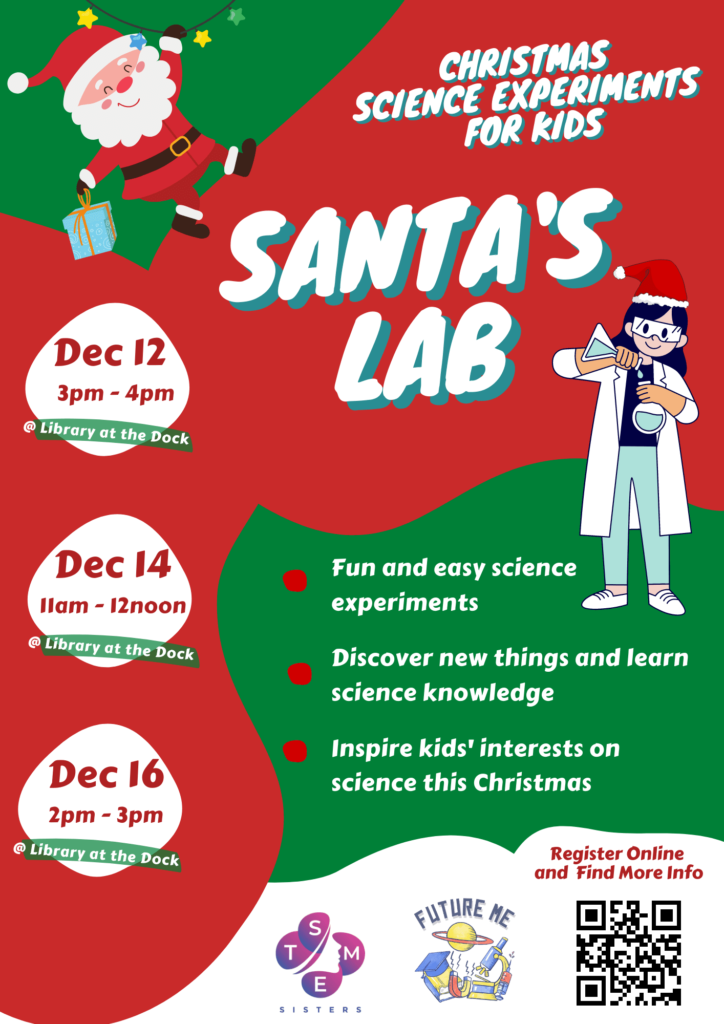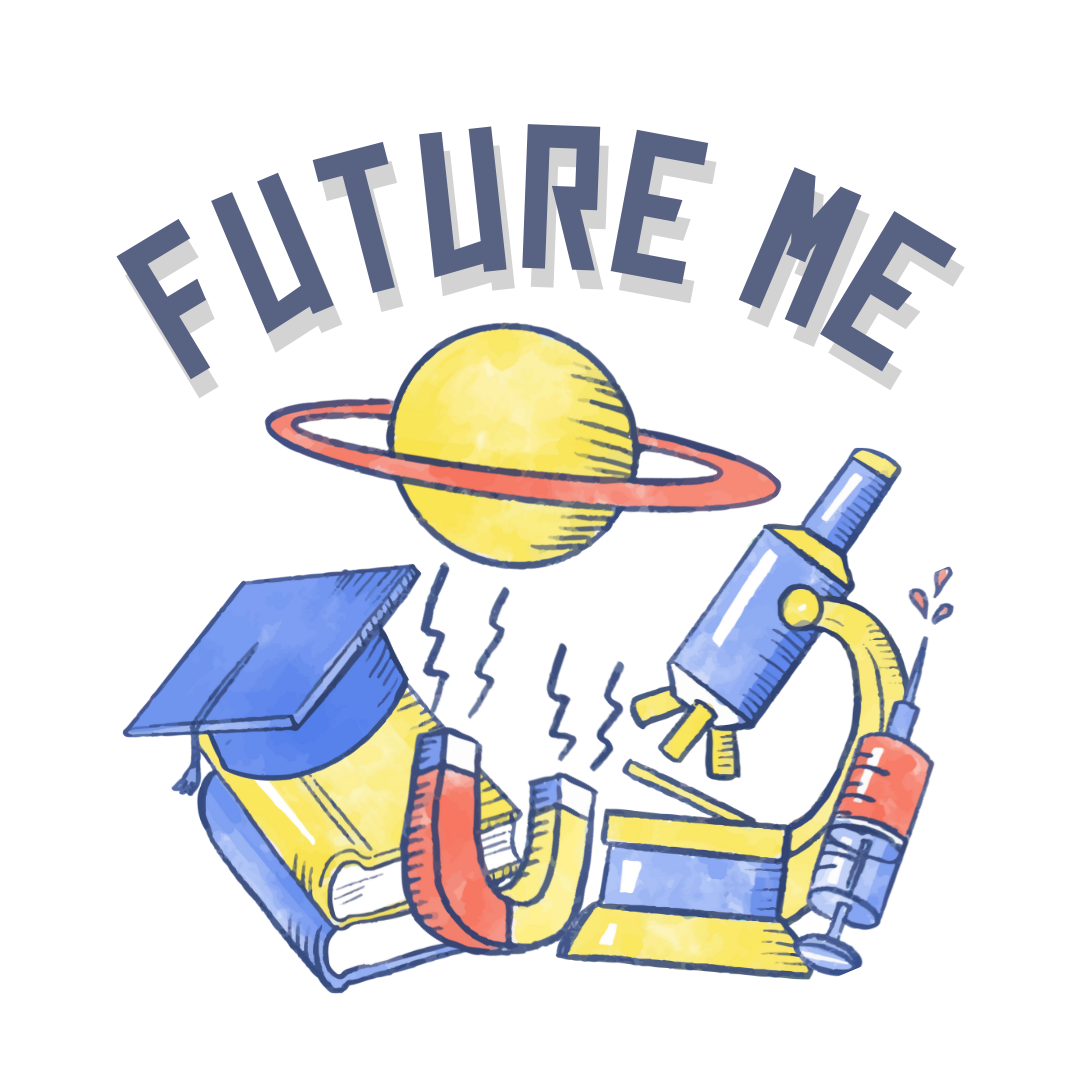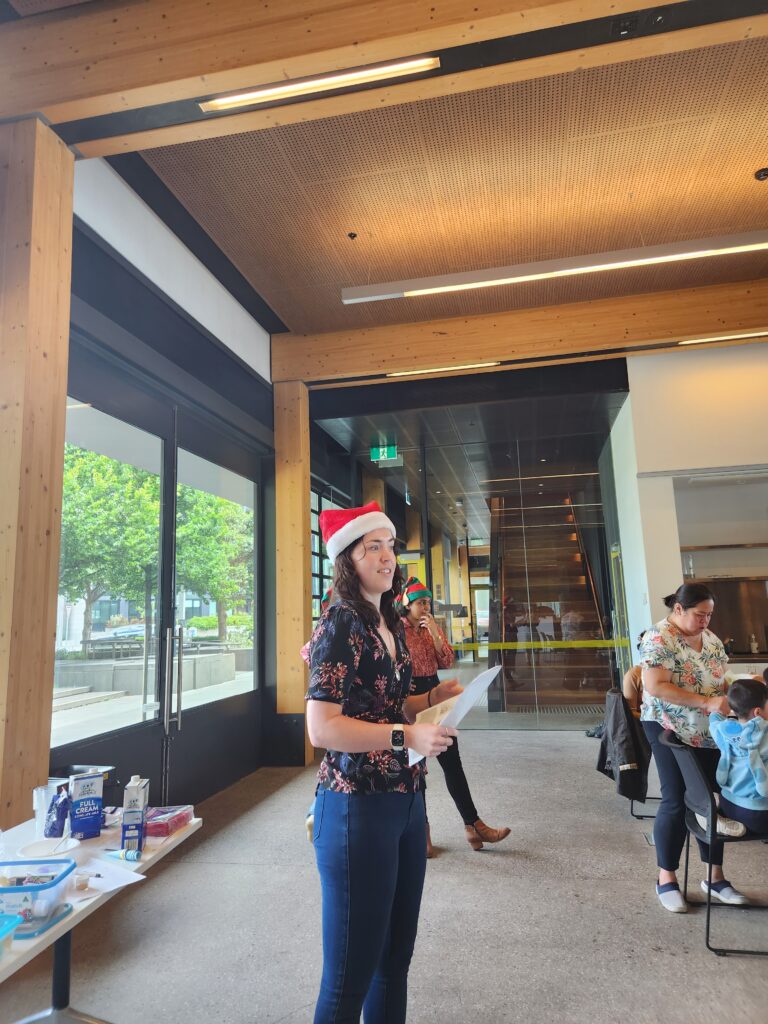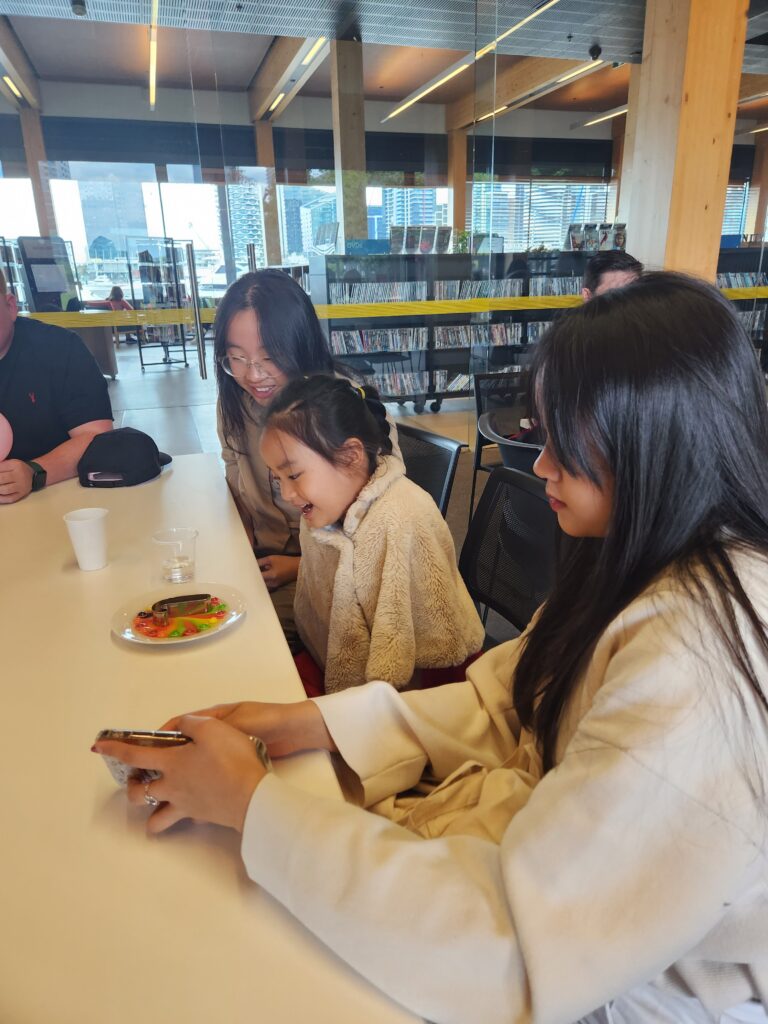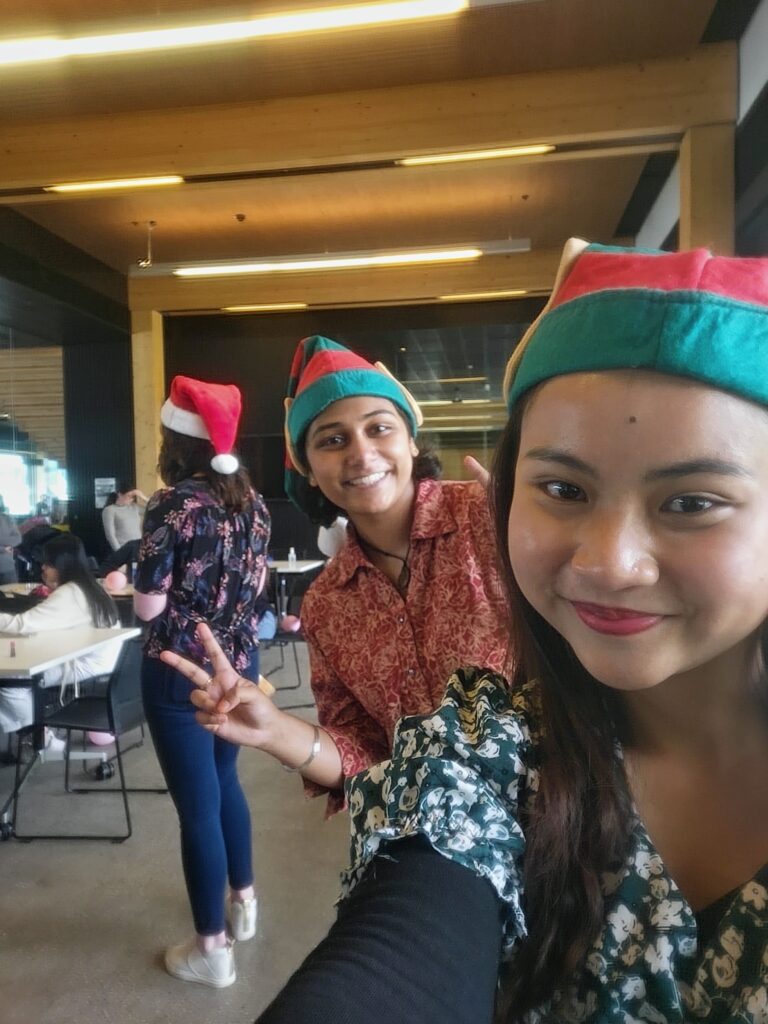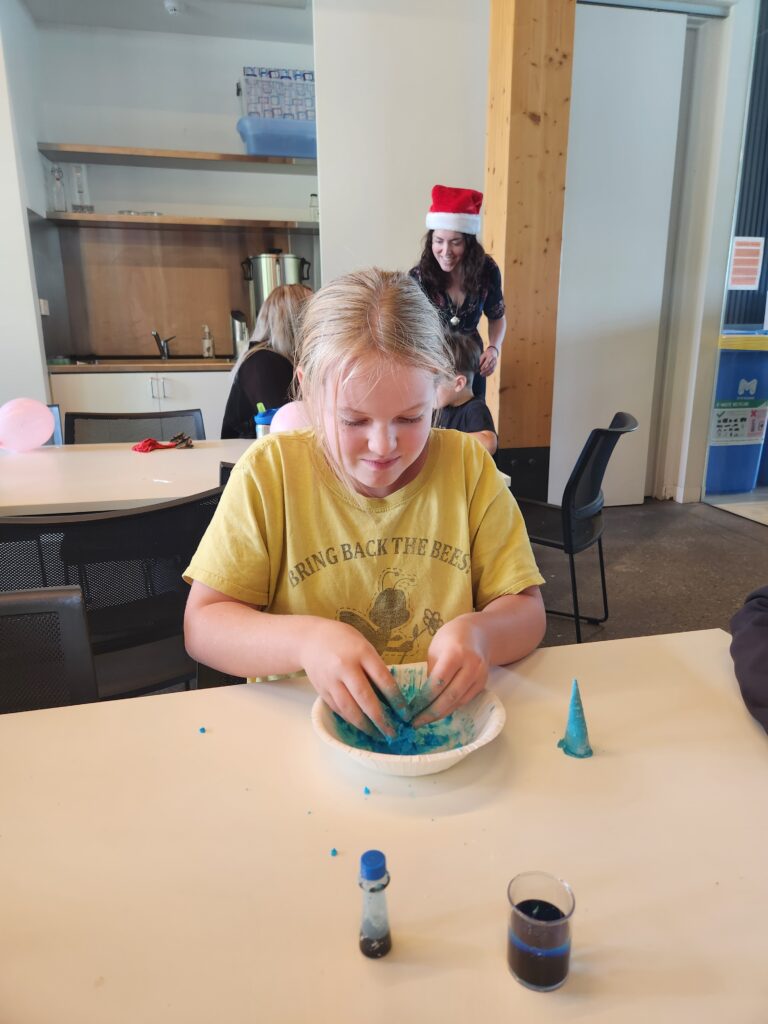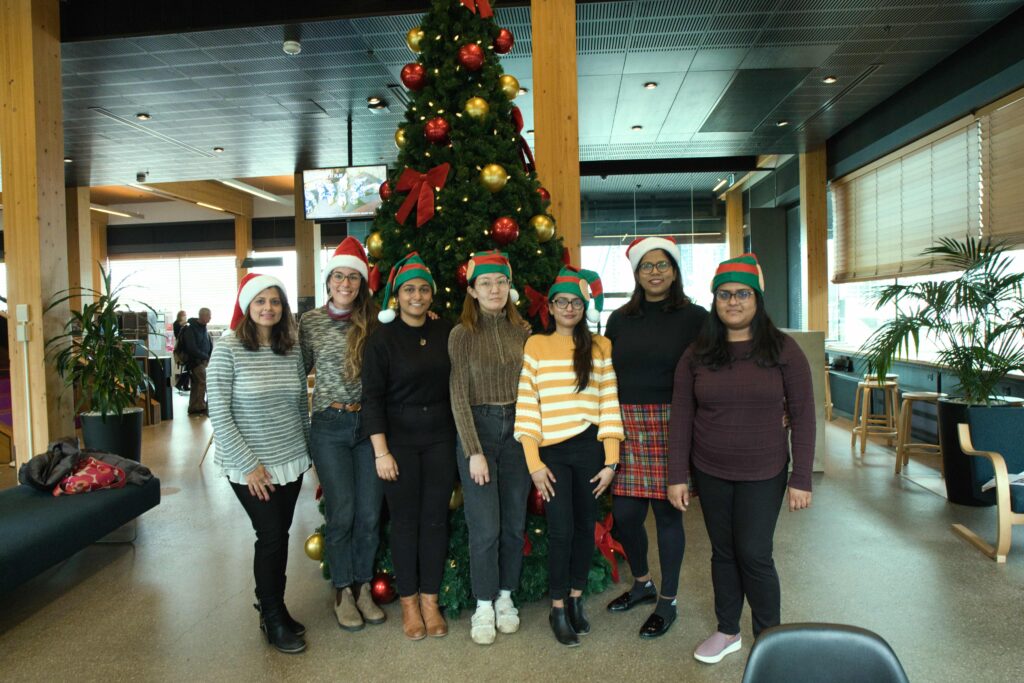SANTA’S LAB – Fun Science experiments
“This the season to be jolly! Fa la la la la la la la la….”
And the participants would second that! The workshops were a huge success. So, you can imagine that the kids were very excited with the range of experiments we had lined up for them. For those who attended the event, I know you must have locked in this special memory…of kids asking if the milk, skittles and balloons were up for grabs. Spoiler alert: They were, and there were no reservations from the kids in having a go at those items! But, let’s take a look at what we really did then!
Santa’s Magic Milk:
This was our very first .experiment, and like many other joyous events, ours started off with milk!
In this experiment, the kids were asked to fill the bowl with milk, but only to ¼ inch in depth. Then, a Christmas cookie cutter was placed in the middle. Following that, the kids were asked to dip a cotton swab in dishwashing liquid and dip the tip into the milk. Lastly, color dye was added into the milk. The outcome? An eye catching color-dye situation.
Here’s a breakdown of the science behind the result!
As we all might know, milk is made up of proteins, fats and minerals. But, proteins and fats are susceptible to changes.
So, when the dishwashing liquid was added into the milk, its molecules would try to attach itself to the fat molecules in the milk.
You might be wondering…”well, why did you add the color dye then?” Well, that’s simply because it helps the kids to see how the molecules are moving around.
Christmas Skittles:
This was my personal favorite. Hard not to be, when skittles are stealing the show!
Firstly, the kids arranged the skittles in a pattern with alternating colors, around the plate. Then, a Christmas cookie cutter was placed in the middle of the plate again. Lastly, water was poured into the center of the plate (just enough to cover the candy). The most important aspect? To not shake or bump the plate, because the water had to be static for this experiment to work!
The results were beautiful and colorful linings attaching to the cookie cutter, from the candy.
Well, that process is called stratification! To simplify, that basically means an arrangement of something into groups. In this case, it was water stratification. Why? Because water has different masses with different properties. That creates the barriers you’d see within the different colors of candies.
But each skittle has the same amount of food coloring that’s being dissolved. So, when the colors branch out, they don’t mix with others.
Jumping Tinsel:
Okay fine, I feel like this was a hit amongst our little scientists!
Firstly, the parents blew balloons that were just big enough for their young ones to hold. Then, the kids charged the balloon by rubbing it on their hair, in one direction. Lastly, the balloon was held near the tinsel and that’s where the magic happens! The tinsel floated up to the balloon.
The science behind it?
It’s basically a boost from static electricity. When the kids rub their balloons on their hair, they charge their balloons negatively because the electrons would be flowing from their hair onto the balloon. But as we all know, matter is made up of positive and negative atoms. Now that the balloon was negatively charged, when it was placed near the tinsel, it attracted the positively charged tinsels.
Fun fact: This is also why balloons stick to the wall!
Fizzing trees:
What’s Christmas without having some chaotic energy but well-deserved fun, right?
n this experiment, the kids were asked to add water and food coloring to the banking soda, until they get a crumbly texture. Then, they were given paper cones to shape their Christmas trees!
Once they scooped the baking soda into the paper scone and shaped their trees, it was time to “melt” their trees with drops of vinegar…and that’s where the fun began!
But, let’s review why their christmas trees fizzed when vinegar was added to them. Vinegar was the acid in this vase, while the baking soda was the base. So when both of these substances came into contact, a chemical reaction occurred, producing a gas called carbon dioxide. That ultimately caused their Christmas trees to fizz out!
That brings you to the end of our workshop journey but stay tuned for more updates regarding events from STEM Sisters. We’ve always got something planned for our audience!
